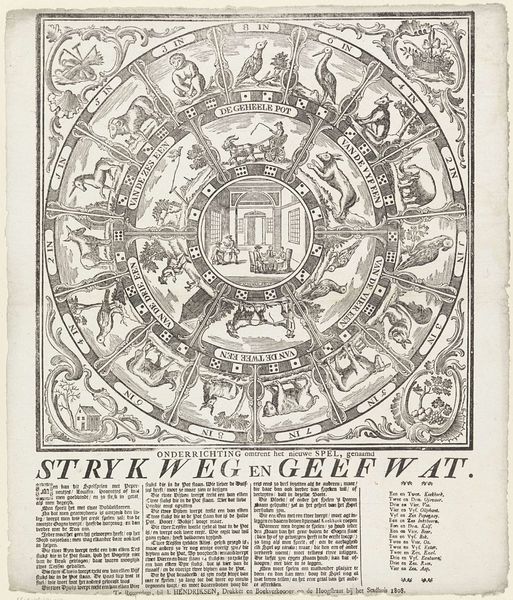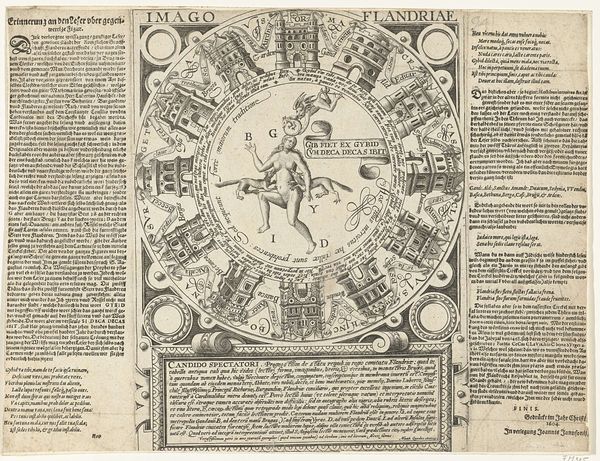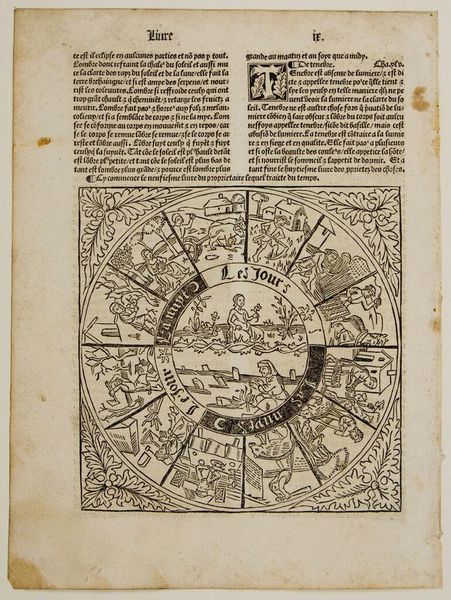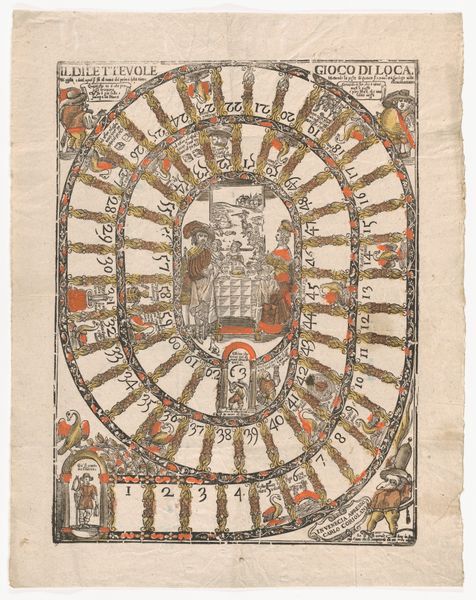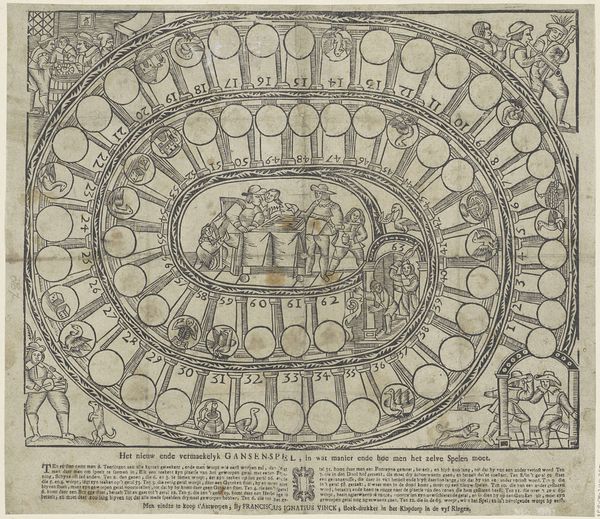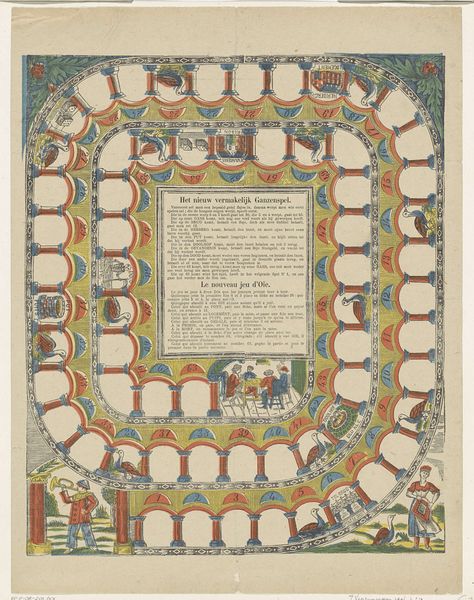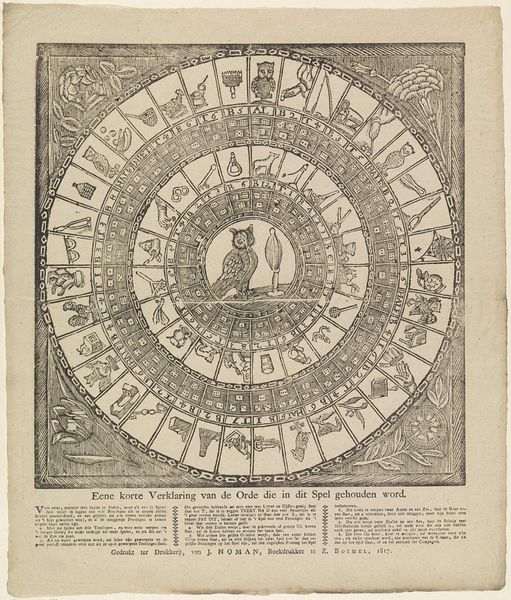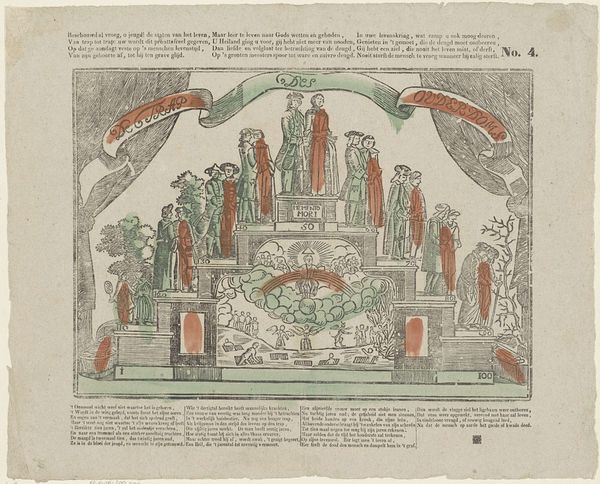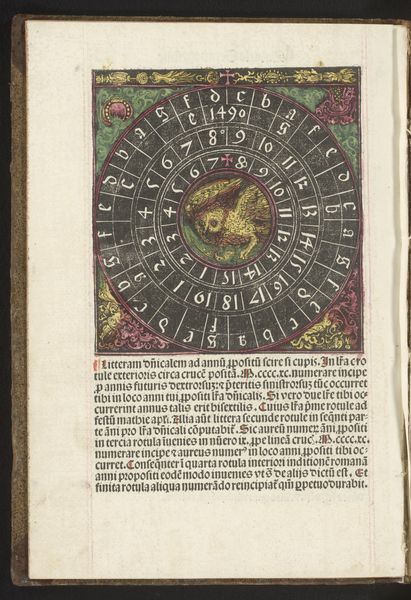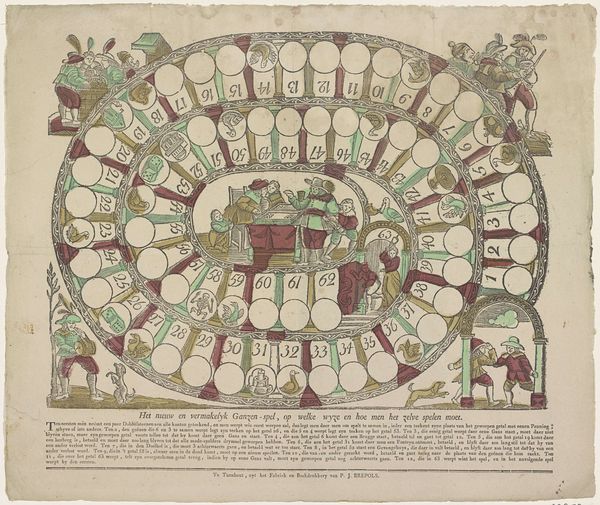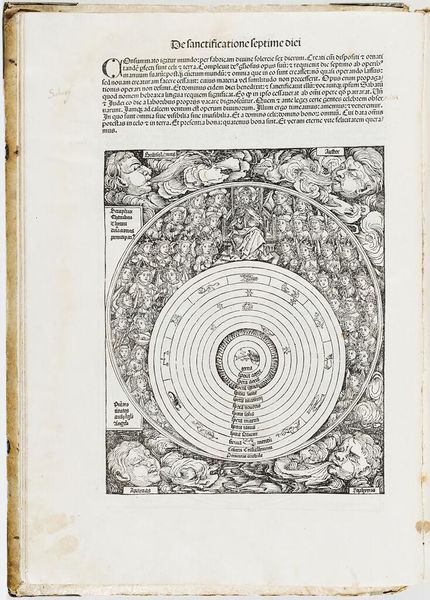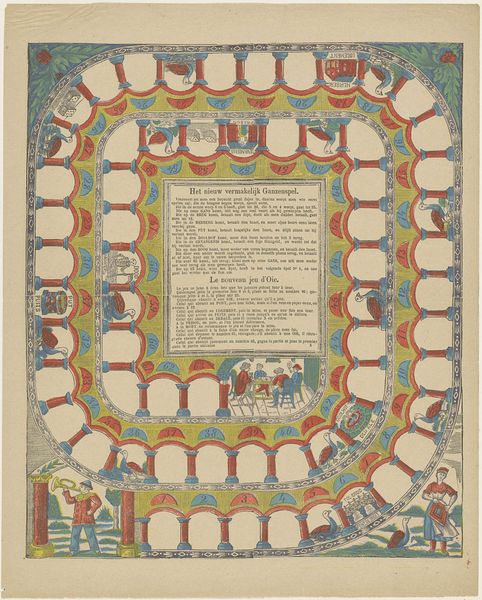
graphic-art, print, engraving
#
graphic-art
#
dutch-golden-age
# print
#
geometric
#
genre-painting
#
engraving
#
miniature
Dimensions: height 550 mm, width 451 mm
Copyright: Rijks Museum: Open Domain
Curator: Looking at this print titled “Strijk weg en geef wat,” which translates roughly to "Cross out and give something,” I am struck by how much it reflects popular leisure culture of the 19th century. Editor: I must say, my initial impression is one of bemusement. The composition is incredibly unusual, like a cross between a board game and some kind of astrological chart! What is this unusual amalgamation of images and numbers laid out as some decorative ephemera? Curator: It's a fascinating piece of ephemera that likely functioned as both game and decor. Created sometime between 1841 and 1864 by F.G.L. Holst, the engraving’s concentric circles of images—animals, people, numerals—represent spaces on a game board. The central image depicts figures seated around a table. It’s currently housed at the Rijksmuseum. Editor: So, it’s about play! The visible engraving suggests a mass-produced item meant for widespread use. I’m curious about the types of ink and paper employed. Was it readily accessible? This certainly affects who had access to leisure like this and the production volume in print shops. Curator: Indeed. This piece reflects evolving social values around leisure. Public games gained immense popularity. These prints reveal a burgeoning industry catering to entertainment needs in emerging cities. Consider the function of these mass-produced items—allowing various social classes to participate in similar diversions. Editor: The very act of its production says something about accessibility. This wasn't unique artwork; its value wasn't from some artist’s unique skill, but on the accessibility of play. Do we know how the print process would affect colour, detail and affordability, in comparison to painted board games for example? Curator: The relative cheapness of mass-produced engravings certainly democratized entertainment, making diversions like games accessible to a wider segment of society beyond just the wealthy elite. The layout evokes ideas related to the “Wheel of Fortune," which creates symbolic ideas about societal hierarchy and aspiration during the 1800s. Editor: It's a good point, by considering that “wheel”, we can recognize production’s influence on culture. It's the industrialization of play, in a sense, offering insight into how commercial forces infiltrated everyday pastimes. Curator: Absolutely, the rise of printed games showcases shifts in industrial output of play objects during that era, indicating that the politics of accessibility and popular culture are linked intrinsically through images and material culture. Editor: Understanding the material history certainly gives tangible form to your analysis about society, which takes an abstract historical concept, such as gaming culture, and contextualizes its development within material terms.
Comments
No comments
Be the first to comment and join the conversation on the ultimate creative platform.
